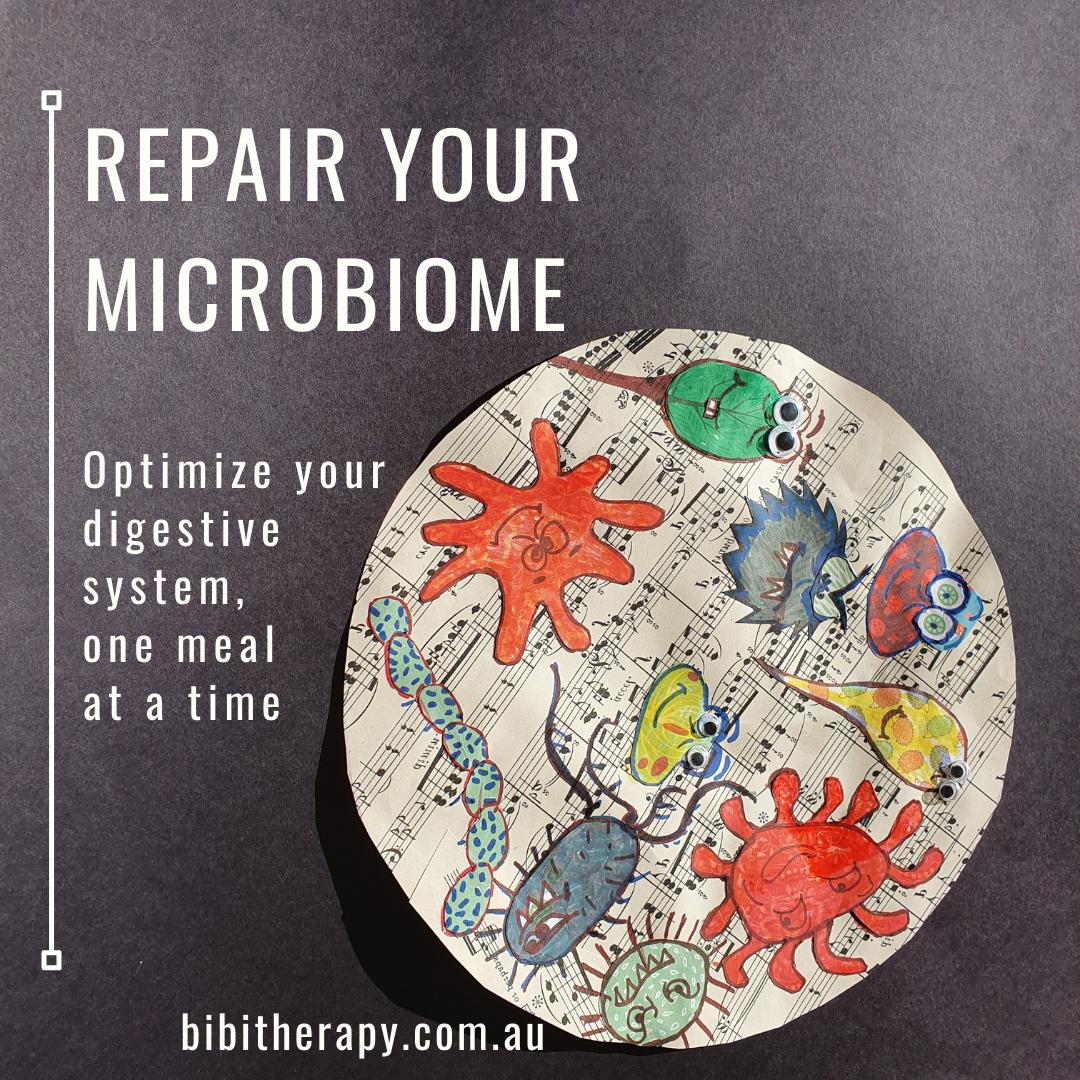Microbiome Boosting Strategies to Keep You Healthy
Some say that we’re more microbe than human. And guess what: this is not a myth anymore. We develop the gut microbiome by age 3, but this can be altered depending on the environmental factors determining the diet type one follows. Currently, we know that there are about 30 to 40 trillion microbes living within us and working for or against us (Holmes & Rosewarne). That is all depending who we feed and what we feed them with. As we move through life and different environments, our microbiota changes, evolves or de-evolves.
Want to know more? Follow the links in the references for an in-depth analysis of this topic. This blog is about how to boost a diverse microbiome on fresh produce in a relatively short time. The answer is in the title: FEED your trillion workers.
How to Boost Gut Microbiome?
It is relatively easy to boost the gut microbiome. To do so one must make sure that the good bacteria, the Trillion Workers, are well nourished. I made it easy for you to remember using the acronym FEED: Feast, Eat Eschew and Ditch as described below:
Feast on whole foods
- Increase your Dietary Fibre by eating regularly your pile of greens: 2½ cups per day would be a beneficial investment as long as you diversify your salads and leafy meals to include other green Champions, walloped with Vitamins A, C, K, antioxidants and minerals. Examples include:
- Arugula – or rocket known as the champion in health-promoting bacteria due to its high content of phytochemicals as well as for its cancer fighter properties (Wassermann et al, 2017);
- Bok choy – known for its water soluble food folates (Ware, 2018) that are beneficial to the colonic microbiota (Food and Nutrition Board, 1988);
- Swiss chards and kale.
- Consume Natural Prebiotic Fibre from whole foods. It is believed that one needs to consume in average about 5g of prebiotic fibre per day. The Prebiotics are a special kind of fibre containing high levels of inulin. Prebiotic fibres pass through the gastro-intestinal tract undigested and stimulate the growth and/or activity of certain ‘good’ bacteria in the colon; example include (Gibson, 1998):
- Leeks – promote healthy digestions by breaking down fat;
- Asparagus – the benefits of this wonder vegie are multiple: its soluble fibre content soars a…, it is a natural diuretic ( you will have a stinky pee though) and it is known to help flush your body of excess salt;
- Jerusalem artichoke – are delicious consumed raw or baked; see note for wind production;
- Apples – are high in pectin, a prebiotic fibre that helps decrease the harmful bacteria in the gut while playing a significant role in cholesterol reduction (Bernie et al, 2019);
- Chicory root – has a very high inulin content and it is often used as a substitute for coffee, without the benefits of the caffeine kick. Due to its high fibre content it is unsuitable for people suffering from IBS or Crohn’s disease.
A note of caution: when changing from a low fibre diet to a high fibre diet, people experience an increase in wind production. Main culprits are Jerusalem artichoke and chicory root. If this is the case, it is better to allow the body to adjust to the new diet over a period of five to 10 days.
Eat Fermented Foods
Fermented foods have been around for thousands of years and they provide the best source of probiotics: live bacteria that are beneficial for gut lining.
Probiotic yogurt. Yogurt is made by fermenting milk with different bacteria. These days supermarkets are full of yogurt products boasting on the probiotics benefits. The main question here is the following “Do they actually make it through the acidic environment of the stomach to colonise the lower intestinal tract?” Trouble is that the real impact that they might have in the gut microbiome is rather unclear. Furthermore the probiotic bacteria often loose viability during shelf storage (Mani-López et al, 2014). If you consume probiotic yogurt, a good rule of thumb is to choose the ones closer to the production date if available.
Best probiotics foods
- Sauerkraut –
- Pickles
- Kimchi
- Kombucha
- Natto
- Miso
A note of caution: Probiotics are live organisms, consumed in large quantities can lead to less beneficial effects including diarrhoea. To increase the benefits of probiotics ensure that you consume sufficient amounts of prebiotics.
Eschew artificial sweeteners
We all know that excess sugar is not good for health in general and is rather unbeneficial for gut health. So, we can access the lesser alternative: fewer calories, same taste. But it turns out that this is far from being the helper we wanted. The “sugar free” products are not always the healthier choices one can make (Ruiz-Ojeda et al, 2019). Some of them, sucralose, can disrupt the digestive health system simply because the body does not recognises it as food! Dr Axe expands on more reasons to avoid artificial sweeteners.
Ditch processed foods
Processed foods like include packaged breads and pastries, frozen pizzas, chicken nuggets, sugar-sweetened sodas, potato chips. Most of them include artificial substances (food colorings, artificial flavours) or contain food components (hydrogenated fats) that are designed to trick the taste and be effective addictive “go to” comfort foods.
Processed foods break down into compounds that are detrimental to the good bacteria and feed the bad bacteria. More often than not they disrupt the digestive system causing irritation and inflammation.
Interesting fact. Recent research just published in May 2020, in Cell Reports, shows that the nose has its own microbiome that affects our health in a similar way as the gut microbiome (Boeck et al 2020). Furthermore it shows that a specific strain probiotic, Lactobacillus casei, is beneficial for the nasal cavity although snorting yogurt is not yet an option. This is the subject for another blog though.
My story with the gut microbiome is one of overcoming pain. As a rheumatoid arthritis sufferer, I went through the highs and lows of health recovery: one in which applied nutrition knowledge led to managing this state without a shadow of a doubt. Re-stablishing the gut microbiota was the key.
Resources
Berni, R., Cantini, C., Guarnieri, M., Nepi, M., Hausman, J. F., Guerriero, G., Romi, M., & Cai, G. (2019). Nutraceutical Characteristics of Ancient Malus x domestica Borkh. Fruits Recovered across Siena in Tuscany. Medicines (Basel, Switzerland), 6(1), 27. https://pubmed.ncbi.nlm.nih.gov/30781616/ https://doi.org/10.3390/medicines6010027
De Boeck et al, 2020, Lactobacilli Have a Niche in the Human Nose, Cell Reports, 31, 107674, https://www.cell.com/cell-reports/fulltext/S2211-1247(20)30627-6
Ertem, H., & Cakmakci, S., (2017). Shelf life and quality of probiotic yogurt produced with Lactobacillus acidophilus and Gobdin. International Journal of Food Science & Technology. 53. 10.1111/ijfs.13653.
Food and Nutrition Board 1988 – Institute of Medicine. Food and Nutrition Board. Dietary Reference Intakes: Thiamin, Riboflavin, Niacin, Vitamin B6, Folate, Vitamin B12, Pantothenic Acid, Biotin, and Choline. Washington, DC: National Academy Press; 1998.
Holmes, A., Rosewarne, C., (2019)Gut Bacteria: The Inside Story, Australian Academy of Science https://www.science.org.au/curious/people-medicine/gut-bacteria
Gibson G. R. (1998). Dietary modulation of the human gut microflora using prebiotics. The British journal of nutrition, 80(4), S209–S212.
Megan Ware, The Health Benefits of Bok Choy, Medical News Today, August 2018, https://www.medicalnewstoday.com/articles/280948
E. Mani-López, E. Palou, A. López-Malo,. (2014), Probiotic viability and storage stability of yogurts and fermented milks prepared with several mixtures of lactic acid bacteria, J. of Dairy Science, 97(5): 2578-590, https://doi.org/10.3168/jds.2013-7551. https://www.sciencedirect.com/science/article/pii/S0022030214002549
Ruiz-Ojeda, F. J., Plaza-Díaz, J., Sáez-Lara, M. J., & Gil, A. (2019). Effects of Sweeteners on the Gut Microbiota: A Review of Experimental Studies and Clinical Trials. Advances in nutrition (Bethesda, Md.), 10(suppl_1), S31–S48. https://doi.org/10.1093/advances/nmy037
Wassermann, B., Rybakova, D., Müller, C., & Berg, G. (2017). Harnessing the microbiomes of Brassica vegetables for health issues. Scientific reports, 7(1), 17649. https://doi.org/10.1038/s41598-017-17949-z https://www.ncbi.nlm.nih.gov/pmc/articles/PMC5732279/



